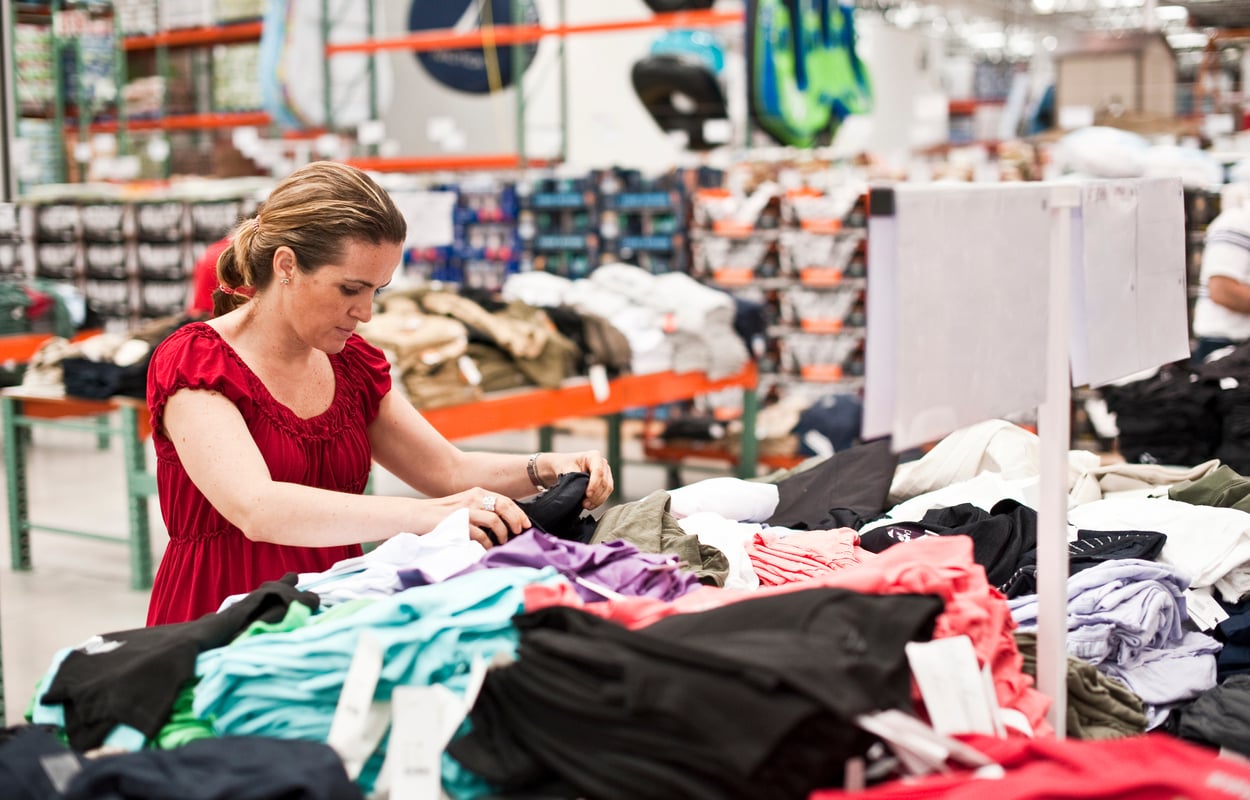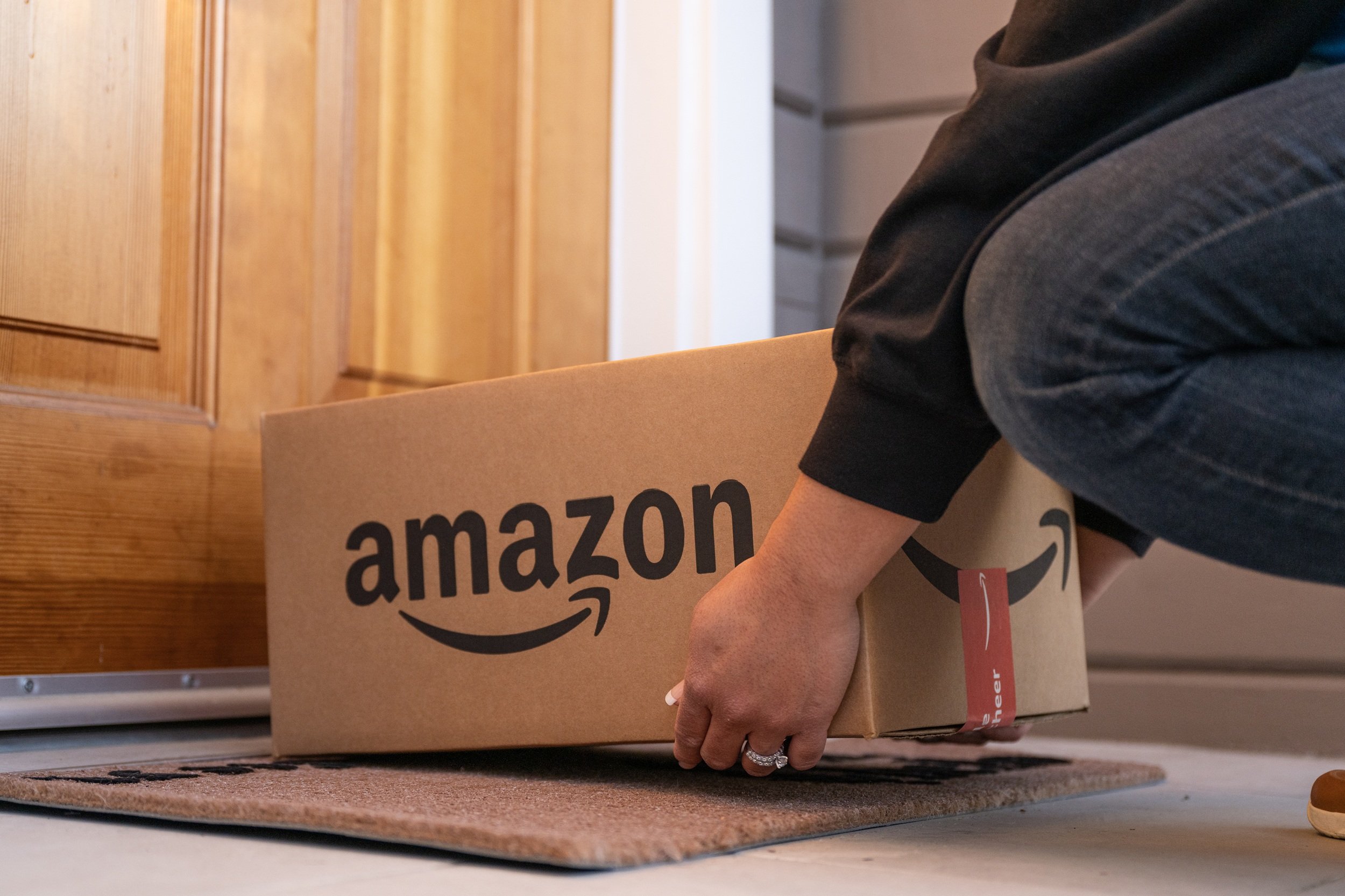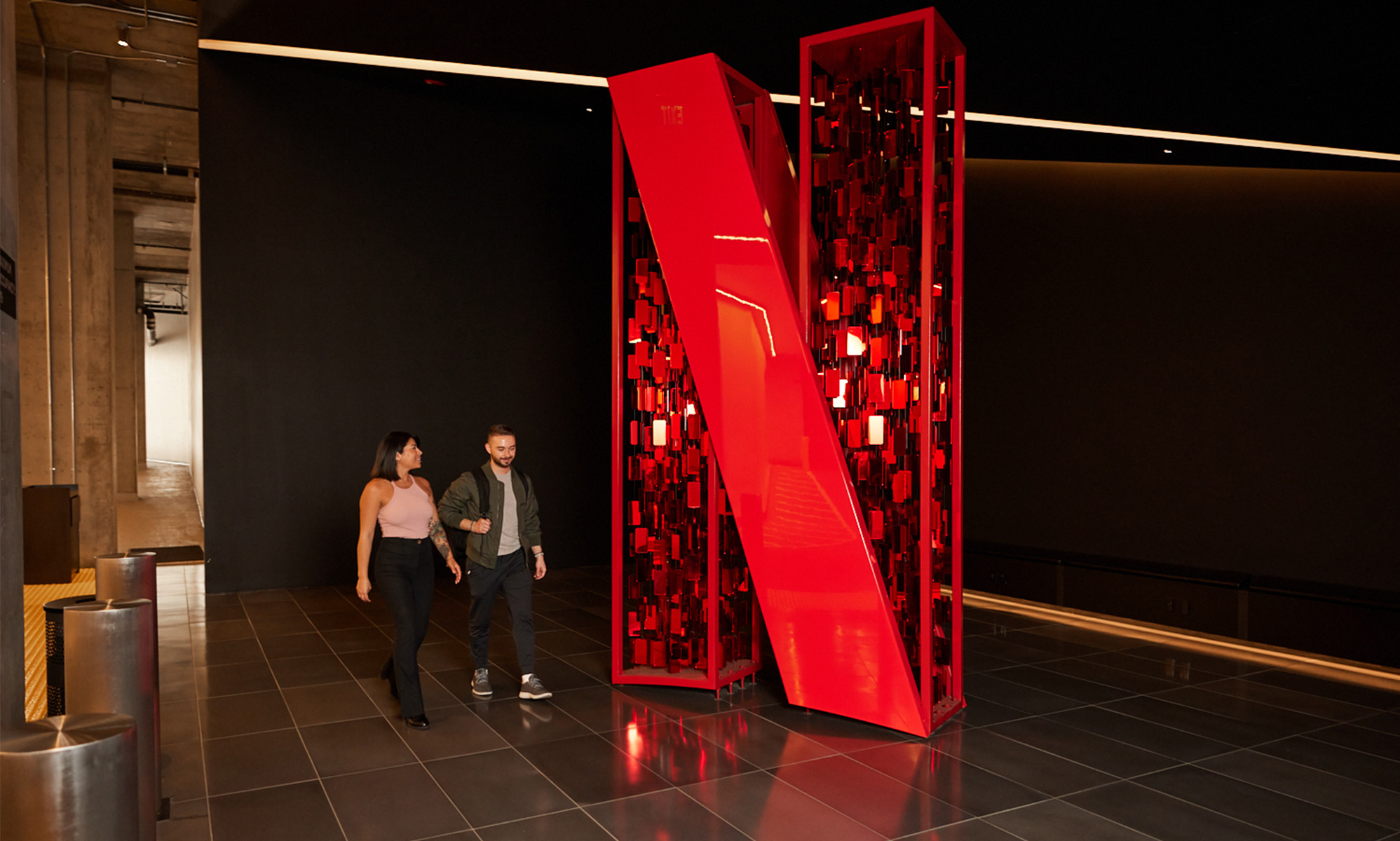In this episode of Motley Fool Money, Motley Fool analysts Emily Flippen and Sanmeet Deo and contibutor Jason Hall unpack four of the newest Asian food chains looking to expand across the United States
The team dives into:
- Whether Jollibee's rise is sustainable.
- The re-emergence of Luckin Coffee and changing consumer tastes.
- If the experiential dining of Kura Sushi and Haidilao Hot Pot are replicable.
- Which chain offers investors the best opportunity today.
To catch full episodes of all The Motley Fool's free podcasts, check out our podcast center. When you're ready to invest, check out this top 10 list of stocks to buy.
A full transcript is below.
This podcast was recorded on Sept. 30, 2025.
Emily Flippen: We're eating up the tastiest trend in restaurants, Asian food chains expanding across the United States and what this means for investors today on Motley Fool Money. I'm Emily Flippen, and today, I'm joined by analysts Jason Hall and Sam Deo to discuss the rise of Asian food chains in the United States, and if their expanding reach and changing palates offer up an opportunity for investors to take a bite out of something new. We'll be discussing luck and coffee, of course, but also some businesses that you may be less familiar with. That includes Kura Sushi and Haidi Lao Hot Pot. We'll be discussing their unit economics, the franchise versus company owned models, brand power, and if these concepts actually do transition across cultures. But we have to start with one of my favorites on the list today, and that's Jollibee. For anybody who's unaware, Jollibee is this Philippine based fast food chain, perhaps best known for its fried chicken and what they call their jolly spaghetti, which is, yes, spaghetti topped with this unique banana ketchup style sauce. It's really hard to oversell what a big name Jollibee is in the Philippines and across Southeast Asia. They have over 1,300 locations in the Philippines alone, nearly 500 more internationally, including over 100 in North America. Although, across all the brands this company owns, they have more than 10,000 stores nationwide. It's a really thinly traded stock. It's on the pink sheets here in the United States with the ticker symbol JBFCF. But when you include its Philippine listed shares, it has an enterprise value of nearly $6 billion. Sanmeet, is there a real growth thesis here for Jollibee or is it really just another example of a franchise model that's likely to flame out?
Sanmeet Deo: I'm really I'm really upset that I haven't heard about this already. This is the first time I'm hearing about Jollibee and being in New York, there's quite a few in Queens and Manhattan and all around New York City. I'm coming around to this just now, too, but as I was looking into it it's a brand that as popular as McDonald's and Coca Cola in its home country. Well, as popular as McDonald's and Coca Cola's here is how popular Jollibee is in the Philippines. Kids love the mascot. They have birthday parties there. It's quite a thing. It's growth thesis really relies on expanding outside into North America where it has only about 100 locations. They're looking to expand out to about 250 in the next few years through franchising, I was surprised to learn that their average unit volumes are 4.2 million a year. That is just for company owned locations, which is what they have now. Filipinos are the third largest Asian origin group in the United States, but 60% of their customers in the United States are non Filipinos. While you think maybe is just appealing to the Filipinos in America that maybe know the chain and are accustomed to the food, it is gaining some traction with customers here as well. They have the ingredients to be successful and grow. It's just whether seen if it catches. Anecdotally with my own experiences, I've seen a lot of Korean fried chicken, hot pot, Thai concepts gain a lot of wide appeal. Although being in New York, I think I might be a little bit early exposed to those.
Emily Flippen: What's really interesting about Jollibee is that, you and I live in places where there's Jollibees actually near us, and it's not one of those brands that you can particularly hear about unless you're already exposed to it. But, Jason, I know this is one that you've looked at before, and I know you have thoughts about the Jollibee menu and how that has transitioned from the Philippines here to the United States.
Jason Hall: I get it trying to find the balance between offering something new while not being "weird". But this world does not need more mediocre mac and cheese and dehydrated mashed potatoes. I'm a little salty that they're doing some of the usual Southern sides to pair with their fried chicken in those US restaurants. But I do think if you look beyond that, my little one little quibble there, one of the things that's interesting about the model is the diversity of the food on the menu. You've got burgers, you've got fried chicken sandwiches, which are supposedly incredible. Sounds weird to American palates, the spaghetti you're talking about. It's a meat sauce with banana ketchup, and it's supposed to be really sweet. Then there's some of the other more like Filipino influenced things rice and noodle dishes. Maybe is a something for everyone, which I think is compelling. Is it going to translate into the US? I think that's only part of this. It is a big part of it. We talked about going from around 100-250 locations. But you also mentioned the global reality. There's more than 10,000 locations. Franchising is a big part of that model. They own some US brands, Coffee Bean and Tea Leaf, which is a 40-year-old US based company that actually has more locations internationally. Smash burger is a US business they acquired recently. I think the point for me is that investors that are interested in this, they need to know everything you own if you buy into this, what the global strategy is, because it's more than just opening a bunch of Jollibee locations in the US, and also know that you're along for the ride with the founding family that have they own a vast bulk of this company. It's very concentrated ownership. It's not just thinly traded in the US. You're ponied along with the people that have controlling stakes in the business.
Emily Flippen: It's a little bit of a head scratcher for me because you see this Jollibee brand that you think can have so much power. But the company actually spends a very small amount of its total cost in terms of marketing, especially here in the United States. Despite the fact that its brand is so pervasive in the countries where it got started, as they're expanding internationally, it doesn't seem like they're building up that same brand recognition. I think that's a really big misstep on the part of management because I think if you're spending less than 2.5% of your total cost of goods on advertising as a franchise based restaurant chain, especially as you're looking to expand and double your store locations in a new country, is, in my opinion, a way to ensure that your average unit volumes fall. But to your point, Jason, it almost feels like Jollibee is an afterthought for this company, because it's not so much about turning the United States into the next big market for Jo Jollibee for fried chicken, for banana ketchup, spaghetti. It's about what smaller almost drink chains can we acquire to expand just total number of store units in the United States. Smashburger, coffee, bean, and tea leaf obviously being two good examples. But in my opinion, it's one of those head scratchers to me because it begs the question like, is this business too diverse to succeed? Are they just trying to grab any growth and losing focus on that core Jollibee brand in the process?
Jason Hall: It strikes me as more empire building than a targeted focused growth. Again, there's more than a dozen different restaurant and beverage brands in the portfolio that makes it harder to focus your spin. Sanmeet, I think you're a good example, where you live, that's where there is a concentration of their stores. Until we started talking about hearing it from Emily, you didn't know about it and I didn't I didn't either.
Sanmeet Deo: I get lots of advertising and flyers, and you see them all around as I go around in terms of different concepts, and a lot of these other Asian concepts are very focused. I think Emily hit on that point. They're trying to do too much. They got to stay focused on who they are and demonstrating that in the market.
Emily Flippen: Well, either way, I'm putting it on my to do list to go visit Jollibee location. That's only a 20 minute drive for me and report back about exactly how I feel about this interesting spaghetti. But up next, we're going to be transitioning from fried chicken to caffeine. Stick with us.
Luckin Coffee is likely a stock that needs no introduction for anybody who's invested or lived through the pandemic. I mean, this is the Chinese based coffee chain that pioneered the model for low cost quick service coffee before, of course, blaming out due to fraud and scandals. Its shares were delisted to the pink sheets, but they still trade there under the ticker symbol LKNCY. I'll tell you what, Jason. This business has made a voracious comeback from its fall from grace. They have over 20,000 locations globally, including a handful that are growing here in the United States, and people are picking up on its model. From your perspective, is there really anything to get an investor excited about Beyond Caffeine, of course, with an investment in Luckin Coffee or are we setting ourselves up here for failure a second time in a row?
Jason Hall: Your two point. Well, it's interesting. I think the big thing, I think a lot of people that maybe heard about the original story don't realize this wasn't just a fraud. The fraud was massive, but there was always a good core business. You just had some leaders that were cooking the books. Another takeaway I think is interesting is the fact that the PRC government, as much as we've seen a lot of autocratic things over the past few years, they didn't try to sweep it under the rug. They let it play out in the public sphere and investors, that should give you a little bit of confidence. I don't know how much, but maybe a little bit. But I keep coming back to there's still two co founders who were with the company and on the board when the fraud happened, there's still now one of them is the CEO, and that always just kind of hangs in the back of my head. But if we look past it, I think we can probably trust its numbers better than any other coffee business in the industry. The growth rates, man, they are something else. You mentioned that store. Actually, the store account surpassed 26,000 last quarter. They had a few thousand when all of this was first going on. They're opening like 2,000 a quarter. Here's the thing. The revenue growth 47% last quarter. That wasn't just new locations. Comps are up by double digits, too. There's a lot of things that are really working well for their format, their go to market strategy. Chinese customers are coming to the stores and maybe not going to Starbucks anymore. Also, as much as the stocks run up, Emily, I'm not sure that I would really say that it's expensive. Sales multiple price to sales is empty calories sometimes, but it can be useful directionally and it trades for a lower price to sales multiple than Starbucks, which we know is struggling, and it's earning much higher margins. Maybe there is something there.
Sanmeet Deo: That's eye popping growth for Luckin, but given his checkered history, as they see on Shark Tank, I'm out.
Emily Flippen: I think that's a completely fair takes on me. I will say, though, there were red flags to me at the time that made me more concerned for Luckin back in 2020 than I am for today. There are some classic examples of fraud that I think investors can look for. For instance, when Luckin Coffee started launching vending machines. Gosh, tell me more about the cash based business that is vending machines. I'm happy to see that their expansion here seemed to be a bit more in good faith. We do not see a lot of the same missteps that I think colored their previous run a public markets. But it's always a fair point that once you've broken somebody's trust, it's harder to build that up. In the case of Luckin, from a business perspective, their strategy was always almost the opposite of what you built for Starbucks. They wanted the low brand recognition, which is to say, they're the cheap brand. You're not walking around the Luckin Coffee to look premium and expensive, you're doing it because they offered you four free coffees when you purchased your one coffee and they were hoping you'd bring it to your co workers. Whereas, Starbucks was much more about larger format stores, higher priced drinks, a cachet associated with the brand, and thus the drinks associated with their brand. Then, of course, the idea of the third place where you'd go, you'd sit down, you'd work, you'd have coffee, you'd have a ceramic cup, which, of course, Starbucks is bringing back now. Luckin Coffee says, to hell with all that. We don't need any of that. We're going to have these small format stores or you don't even engage with a barista. For the locations here in the United States, you can't walk in and just order at the counter. You have to place that order digitally. It's almost the exact antithesis of thesis that brought Starbucks to power, and it's really interesting to see how consumer dynamics have shifted so dramatically that it is now about speed, efficiency, and price, and less so about convenience, customization and connection.
Jason Hall: The smartphone influence on coffee ordering, maybe?
Emily Flippen: Exactly. Also, I think there's a desire here from American consumers to be a little more to the point. We see the success for businesses like Dutch Bros. and other drive through coffee chains where it's a little less about the experience and the location and a bit more about the convenience and accessibility and the cost associated with the daily purchases. Actually maybe more positive here on the future for Luckin Coffee in the United States than I ever have been. I never thought I would have said that even just a couple of years ago. Their franchise expansion model is incredibly risky to be very clear with that, but the business is driving much higher profits, expanding store account, and they seem to be doing something that is actually resonating with consumers, which, in my opinion, is a stark difference from where the company was even just a few years ago. Before we move on to discuss our last course, which is, of course, conveyor belt sushi and hotpot. I do have a quick note for our listeners. David Gardner, the co founder of the Motley Fool and Chief Rule Breaker here at the Molly Fool just released his newest book, Rule Breaker Investing, How to pick the best stocks of the future and build lasting wealth. It's a great read, and it speaks a lot to the mentality behind how we think about investing here at the Fool. But there is even more. David will be serving as a strategic advisor for our newest portfolio service here at the Fool, Supernova. The original Supernova portfolios closed in 2021 and averaged nearly 22% annualized return across nine years. The good news is that Supernova will be reopening for the next few days. Listeners can go to supernovaisbackfool.com to get some more information.
As you wrap up the show today, we have to talk about two of the more experiential style Asian food chains expanding across the United States that is Kura Sushi and Kura Sushi and Haidi Lao Hot Pot, two of my favorites here, at least from a consumer perspective. But some meat let's start with Kura. This is the conveyor belt sushi restaurant that's looking to capitalize on the desire for both dinner and a show to some extent. I'm not a huge sushi fan myself, but I do love how they gamify the process of eating. Even more, I like how this company is expanding not through a franchise model, but through actually a company owned location model. It's a bit slower, but in my opinion, maybe a bit more lucrative for investors. Kura Sushi is actually headquartered and listed in Japan for the parent company, but investors can get a slice of Kura's US based arm by buying shares of KRUS on the NASDAQ. Sanmeet, what do you think? Is there something to be excited about here for investors?
Sanmeet Deo: Well, you're right Emily. I've been to Kura with my family, and it's definitely a fun experience. You get the touchscreen ordering, grab sushi off the conveyor belt, robots serving drinks, et cetera. It's a fun, a few flashing lights. I almost feels like you're in a casino to some extent. But most importantly, the food is quite good. The sushi is very good. The other food items they have is very good. They have about 70.
Jason Hall: I don't know if I would ever want to associate sushi and gambling.
Sanmeet Deo: There's no gambling involved. It's just a lot of fun lights and stuff. But they have about 75-80 US locations, so smaller than some of the other chains. They report around 17-18% restaurant level operating margins, which is pretty good and 4.2 million in AUVs. Very impressive, as well. However, they aren't profitable because they just have very high expenses because they're pretty much building out for a larger foot. They're aggressively pursuing unit growth of 20% plus. It remains to be seen if this concept would take off. It's fun and whether diners will actually make it a regular habit. It's not a one and done experience, but I don't see it being a very often experience. I think more like maybe like a Benihana for special occasions. Not sold yet on how much you'll gain traction.
Emily Flippen: The Las Vegas of sushi, if you will. I love the experience that is CRA, but I'm curious. When I think about these food chains that we've talked about today and the distinct brands that they've built, I think that CRA is maybe the area where I struggle the most because it feels like it's the most easily replicable. I have probably a half a dozen conveyor belt sushi places that are located near me. Now, granted, I'm in a major metropolitan area, but in your opinion, is there anything that's unique or special that would cause somebody to say, Hey, I have to go to Kura to get my conveyor about sushi. I can't go to that place down the street.
Sanmeet Deo: It is relatively clean and well organized and maintained. That definitely helps. I think I'd be more suspect to go to a random conveyor belt sushi, that concept, to me, doesn't sound appealing in general. They're trying to build up a little bit of their brand name, which over time, if they can, then it might be associated with that conveyor belt sushi concept.
Emily Flippen: If the best we're coming up with is the restaurants are clean, then part of me thinks that maybe investors can do a little better
Jason Hall: Scalability is a challenge with that format, too. I think that's one of the things that can stand in the way.
Emily Flippen: Part of the reason why you see it not generating profits yet. Jason, the stock I want to talk to you about is actually one of my favorites of the bunch. That's Haidi Lao Hot Pot. It's traded over the counter here in the United States with the ticker HDALF. I spent four years of my undergrad living in China, and I could never really afford to eat at Haidi Lao. But I did love it whenever I got the opportunity to have somebody else treat me to a meal there. There's a high end staple for hotpot. They have a real Rags to Riches story and its founder and CEO. But there are over 1,400 locations across the globe, and have more than a dozen here in the United States. I've been expanding pretty aggressively. Jason, I know I love to splurge here for some food, but is there anything to wet the appetite of investors?
Jason Hall: I think the thing that stands out to me, and this is to a certain extent the case for Kura Sushi, as well, because you're starting to move into these more specialty restaurants where they're just not going to have the mass market same mass market appeal. People either like sushi or they will never touch it. It's not like fried chicken, where it's like, the vast majority of people are going to be cool with it. Hot Pot is a little more specialty, as well. Again, you're talking about the price point. You can get pretty expensive before you know it. In the restaurant business, the fundamentals, just blocking and tackling are so important. Especially compared to a SAS company, where high margins just wallpaper over being mediocre operators, you just can't get away with that and super high as the parent company here. It's operating margins in the first half of the year were 3%. That should make it really clear how important it is for restaurants to be discipline growers, especially in this case, if they're also the operators. You look at Luckin and Jollibee that we talked about earlier, they've made franchising a big part of their growth strategy, which means you get to pass along the bulk of the financial risk, offloading operational responsibilities and just earn high margin freeze on franchising in a percentage of sales. I think that's one of the reasons we've seen growth slow here. Again, it's also niche, so they have to be really thoughtful and mindful about where they do expand because they can't open a restaurant and maybe just come a little short of expectations. There's a real risk here of just failure if you underestimate or overestimate what the market can be worth for a specific location. They have what not even 200 total locations. It's a small business. I think it's really important that they focus on executing, make sure they're in the right markets and really have good operational strength because you just don't have the margin of safety you do with a coffee shop or a fast food joint.
Emily Flippen: A completely fair point. As we sign off here, I'm going to force you both into a somewhat uncomfortable position, given the takes I've heard today about the companies you've discussed. But I would love to do a lightning round and force you both to put your metaphorical money where your mouth is. If you had to buy one of these Asian style publicly traded companies that we discussed today, which one are you buying and why? While you think about it, I'm happy to go first. I don't think this will be too much of a surprise, but I actually lean toward Jollibee out of the group that we discussed today. The reason is is because exactly what you were just talking about, Jason, what is a business that is doing something that is, A, really scalable and profitable, but it is also really unique? As I think about what makes a successful chain here in the United States, they have to be doing something that can't be replicated by their competitors, at least not effectively or efficiently, and as diverse as the strategy and as crazy as it seems to be, and as much as I think the Jollibee managment team could do more, especially in terms of marketing. I also think there's a lot of value that exists in that brand that is untapped with an enterprise value of only $6 billion given their thousands of store locations. Sanmeet, I think you're not picking luck in coffee, so where are you going?
Sanmeet Deo: Surprisingly, before this, I had a different one in mind. But now after talking, I'm going with Jollibee too. I think their hurdle to clear, to be successful, or do well is lower than some of the other chains. Betting on chicken is always a good thing. There can't be enough chicken places. America loves this chicken and all different flavors, and it has its unique appeal and flavor profile that I think once it's able to brand itself, get its name out and demonstrate what it is, I think you can have some success, and especially the franchising bit will actually help accelerate their growth much more. I'll put my bet on Jollibee.
Jason Hall: Sam meat, I bet I can get you to go try it this week. I have a special Korean fried chicken on the menu right now in Queens.
Sanmeet Deo: I'm going to look up my closest one.
Jason Hall: There you go. Done. As much as I want to say, Luckin, I'm just again, I'm not comfortable there. Fool me once, shame on you, fool me twice. I'm not comfortable there. Kura Sushi is of the cuisine types. It's the ones that I like the most, but their gross margins are less than 12%. There's so thin margin of safety, and it's probably the most binary food type for tastes. That concerns me. The thing that brings me back to Jollibee is scale, the size of their locations. They own food manufacturing facilities. You get to that point and scale really matters a lot. As much as we quibble about their not spending enough to market, they can ramp that up. They already have things to give them lower costs. That is maybe the most important thing you can do as a restaurant is lock in low cost as a producer. They have scale. To me, I think that's probably the driver. Plus, the stock is it's not expensive. You have some margin of safety built in there in terms of what the market's expecting.
Emily Flippen: I love the fact that as we sit here and debate these foods, not only are we maybe getting a little hungry for some Jollibee but also they just offer businesses and investment opportunities for investors who are looking to diversify their portfolios away from the Cava, Sweetgreens or Chipotles of the world that tend to get a lot more coverage from financial media. There are a lot of really interesting, fast growing concepts here in the United States that are worth exploring as potential investment opportunities. I hope today's podcast was at least somewhat enlightening as to what those opportunities may prevent investors over the course of the next few years. Listeners, you should be sure to join us tomorrow because Travis is going to be discussing Open AI and the implications that its shopping initiative has from everyone from Etsy to Amazon.
In the meantime, Jason and Sanmeet thank you both so much for joining me. As always, people on the program may have interest in the stocks they talk about and the Motley Fool may have formal recommendations for or against, so don't buy or sell stocks based solely on what you hear. All personal finance content follows the Motley Fool editorial standards and is not approved by advertisers. Advertisements are sponsored content and provide for informational purposes only. To see our advertising disclosure, please check out our show notes. For Jason Hall, Sanmeet Deo, and the entire Motley Fool Money team, I'm Emily Flippen. We'll see you tomorrow.





